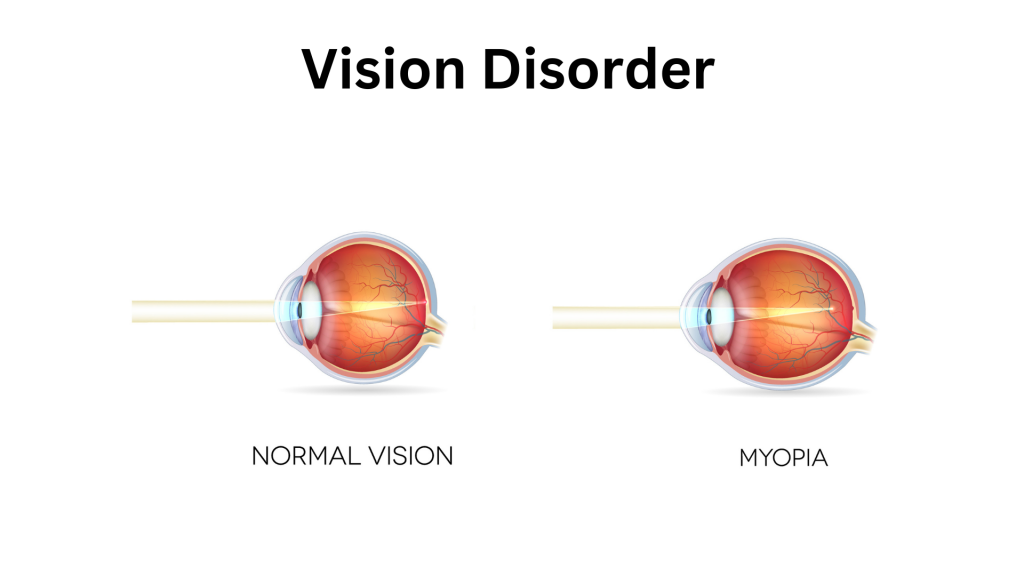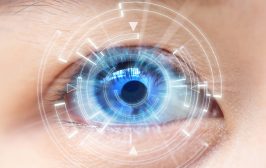-
See the Difference: Save $1,000 on LASIK , Find More
*Must mention this promotion and be treated before April 30 of 2025 to qualify. $1,000 off for both eyes on standard Wavelight price, $500 off for one eye. Cannot be combined with any other offers.
Can LASIK Correct Nearsightedness?
Nearsightedness affects millions of people worldwide, limiting their ability to see distant objects clearly without corrective lenses. While glasses and contact lenses provide temporary solutions, many seek more permanent options. LASIK (Laser-Assisted In Situ Keratomileusis) has emerged as one of the most popular and effective surgical procedures for correcting nearsightedness, offering freedom from corrective eyewear and improving quality of life for many patients.
Understanding Nearsightedness (Myopia)
Nearsightedness, medically known as myopia, is a refractive error that occurs when the eye’s shape causes light rays to focus in front of the retina rather than directly on it. This typically happens when the eyeball is too long or the cornea is too curved. As a result, distant objects appear blurry while close objects remain clear.
Myopia typically develops during childhood and adolescence, often progressing until early adulthood when it tends to stabilize. According to the American Academy of Ophthalmology, nearsightedness affects approximately 30% of Americans, making it one of the most common vision conditions.

Types and Degrees of Myopia
We classify myopia based on its severity:
- Mild myopia: -0.25 to -3.00 diopters
- Moderate myopia: -3.25 to -6.00 diopters
- High myopia: Greater than -6.00 diopters
Higher degrees of myopia not only impact vision more severely but may also increase the risk of certain eye conditions, including retinal detachment, glaucoma, and cataracts. This makes correction particularly important for long-term eye health.
How LASIK Corrects Nearsightedness
LASIK works by reshaping the cornea, the clear front surface of the eye. For nearsighted individuals, the procedure flattens the cornea to allow light entering the eye to focus properly on the retina, resulting in clearer distance vision.
The fundamentals of the LASIK procedure include:
- Creation of a corneal flap: Using a femtosecond laser, the surgeon creates a thin flap in the outer layer of the cornea.
- Corneal reshaping: Once the flap is lifted, an excimer laser precisely removes tiny amounts of corneal tissue according to measurements taken during pre-operative examinations. For nearsightedness, the laser flattens the central cornea.
- Flap replacement: After reshaping, the surgeon repositions the corneal flap, which adheres naturally without requiring stitches.
This procedure effectively corrects the refractive error that causes myopia, allowing light to focus properly on the retina and resulting in improved distance vision.
Candidacy for LASIK Surgery
Not everyone with nearsightedness is an ideal candidate for LASIK. We thoroughly evaluate several factors to determine eligibility:
Age and Prescription Stability
Candidates should typically be:
- At least 18 years old (preferably 21+)
- Have a stable prescription for at least one year
- Have myopia within the treatable range (typically up to -8.00 or -10.00 diopters, depending on other factors)
Eye Health Requirements
Ideal candidates should have:
- Healthy eyes free from diseases such as keratitis, uveitis, herpes simplex affecting the eyes, or glaucoma
- Corneas of adequate thickness, as the procedure removes corneal tissue
- No history of certain eye injuries or surgeries
- Normal tear production (not suffering from severe dry eye)
General Health Considerations
Certain health conditions and medications may impact eligibility:
- Autoimmune disorders like rheumatoid arthritis or lupus may increase complications
- Diabetes, when not well-controlled, can affect healing
- Pregnancy or nursing temporarily changes vision and is a contraindication
- Certain medications may interfere with healing or increase dry eye symptoms
Research indicates that approximately 80% of individuals interested in LASIK meet the eligibility criteria. For those who don’t qualify, alternative procedures such as PRK (Photorefractive Keratectomy) may be options.
Success Rates and Expectations
LASIK for nearsightedness boasts impressive success rates, with research consistently showing high patient satisfaction. According to the American Refractive Surgery Council, more than 96% of patients achieve their desired vision after LASIK surgery.
Visual Outcomes
For mild to moderate myopia, research shows:
- 20/20 vision or better in 90-95% of cases
- 20/40 vision or better (legal driving vision without correction) in over 99% of cases
For high myopia (greater than -6.00 diopters):
- 20/20 vision in 80-85% of cases
- 20/40 vision or better in 95-98% of cases
It’s important to note that while LASIK significantly reduces dependency on corrective lenses, some patients may still need glasses for certain activities, particularly as they age and develop presbyopia (age-related farsightedness).
Longevity of Results
LASIK creates a permanent change to the cornea’s shape. However, vision can change over time due to:
- Natural aging processes
- Development of presbyopia (typically after age 40)
- Rare cases of regression (partial return of myopia)
- Development of new or different vision conditions
Studies tracking LASIK patients long-term show that results are generally stable, with only about 10% of patients requiring an enhancement procedure (a second LASIK) within 10 years.
Potential Risks and Side Effects
While LASIK is considered safe and effective, as with any surgical procedure, it carries certain risks and potential side effects that we thoroughly discuss with all prospective patients.
Common Side Effects
Most patients experience some of these temporary effects:
- Dry eyes: Decreased tear production may last for up to six months and is managed with artificial tears and sometimes temporary punctal plugs.
- Visual disturbances: Glare, halos, or difficulty driving at night typically improve within 3-6 months but may persist longer in some patients.
- Fluctuating vision: Clarity may vary throughout the day, particularly during the first few months.
Less Common Complications
More serious but rarer complications include:
- Undercorrection or overcorrection: Sometimes too little or too much tissue is removed, requiring an enhancement procedure.
- Flap complications: Issues with the corneal flap such as wrinkles, displacement, or abnormal healing occur in less than 1% of cases.
- Infection: Extremely rare (less than 0.1%) but potentially serious if untreated.
- Ectasia: Progressive thinning and bulging of the cornea that can worsen vision; modern screening techniques have significantly reduced this risk.
Studies indicate that severe vision-threatening complications occur in less than 1 in 1,000 cases. The risk of complications increases with higher degrees of myopia and when LASIK is performed on patients with certain contraindications, emphasizing the importance of thorough screening.
Cost Considerations and Insurance Coverage
The financial aspect of LASIK surgery is an important consideration for many patients.
Average Cost of LASIK
The national average for LASIK for nearsightedness typically costs between$1,500 – $5,000 per eye according to Market Scope’s recent US Ophthalmologist Survey.
We connect patients to all-laser LASIK from some of the nation’s most experienced surgeons for an all-inclusive price of$2,495 per eye, with most patients paying less than$1,900 per eye once health and vision discounts or available promotions are applied. This price can vary based on:
- The technology used (Wavefront-guided or bladeless)
- The surgeon’s experience and reputation
- Geographic location
- Facility fees and pre/post-operative care inclusion
Insurance and Financing Options
Most insurance plans consider LASIK elective and don’t provide coverage. However, several options exist to make LASIK more affordable:
- FSA/HSA accounts: Flexible Spending Accounts and Health Savings Accounts allow use of pre-tax dollars for LASIK.
- Vision insurance discounts: Some vision plans offer member discounts for LASIK at participating providers.
- Financing plans: Many LASIK centers offer zero-interest or low-interest payment plans.
- Military benefits: Service members and veterans may qualify for discounted or covered procedures depending on their role.
Long-Term Value Calculation
When considering the cost of LASIK, we encourage patients to calculate the lifetime expenses of glasses and contacts, including:
- Annual eye exams
- New frames and lenses every 1-2 years
- Contact lenses and solutions
- Prescription sunglasses
Many patients find that LASIK pays for itself within 5-10 years when compared to these ongoing costs of glasses and contacts.
LASIK represents a remarkable advancement in the treatment of nearsightedness, offering most patients freedom from glasses and contacts with a quick, relatively painless procedure. With success rates exceeding 95% for mild to moderate myopia and long-lasting results, it’s no wonder millions have chosen this path to clearer vision.
However, the decision to undergo LASIK should be made carefully, considering individual eye health, lifestyle needs, and financial factors. Not everyone with myopia is an ideal candidate, and alternative options may be more suitable for some individuals.
We encourage those considering LASIK for nearsightedness to schedule a comprehensive consultation with a qualified refractive surgeon to discuss personal expectations, potential outcomes, and any concerns. With proper screening, expert surgical care, and appropriate follow-up, LASIK continues to be one of the most successful elective procedures available for correcting nearsightedness.
References
Alió, J. L., Muftuoglu, O., Ortiz, D., Pérez-Santonja, J. J., Artola, A., Ayala, M. J., Garcia, M. J., & Castro de Luna, G. (2015). Ten-year follow-up of laser in situ keratomileusis for myopia of up to -10 diopters. American Journal of Ophthalmology, 145(1), 46-54.
American Academy of Ophthalmology. (2021). Refractive Errors & Refractive Surgery Preferred Practice Pattern. https://www.aao.org/preferred-practice-pattern/refractive-errors-refractive-surgery-ppp-2017
American Refractive Surgery Council. (2018). LASIK: The Path to 20/20 Vision. https://americanrefractivesurgerycouncil.org/lasik-the-path-to-2020-vision/
Sandoval, H. P., Donnenfeld, E. D., Kohnen, T., Lindstrom, R. L., Potvin, R., Tremblay, D. M., & Solomon, K. D. (2016). Modern laser in situ keratomileusis outcomes. Journal of Cataract & Refractive Surgery, 42(8), 1224-1234.
Shortt, A. J., Allan, B. D., & Evans, J. R. (2013). Laser-assisted in-situ keratomileusis (LASIK) versus photorefractive keratectomy (PRK) for myopia. Cochrane Database of Systematic Reviews, 1, CD005135.
Jones, C. (n.d.). 2024 Single-Use Ophthalmic Surgical Products Market Report: Global Analysis for 2023 to 2029, September, 2024 | Market Scope. https://www.market-scope.com/pages/reports/463/2024-single-use-ophthalmic-surgical-products-market-report-global-analysis-for-2023-to-2029-september-2024
YOU MIGHT ALSO LIKE...
VISION CENTERS NEAR ME
Enter your zip code, city, or a doctor name below to find a vision center.
Find out if LASIK is right for you
Congratulations!
Your vision issues can most likely be corrected with a LASIK procedure. Schedule a free consultation today.
Answer 5 simple questions to see if you are a candidate
What is your age group?
Do you wear...
With corrective lenses, do you have...
Have you ever been told that you have astigmatism?
Have you ever been told that you have dry eyes?
Request an Information Kit
Learn about your surgeon, the latest advanced technology, procedures, options and benefits, financing options, and what to expect from your LASIKPlus experience.









